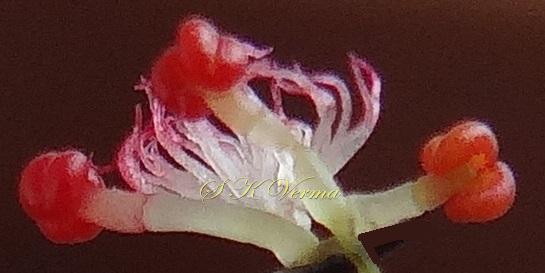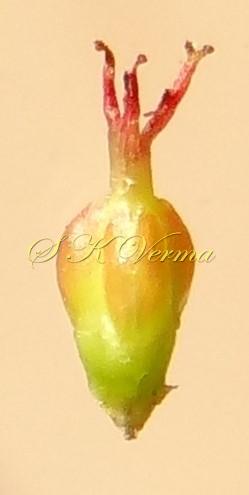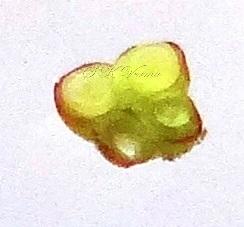Euphorbia milii
Euphorbia milii
Des Moul., Bull. Hist. Nat. Soc. Linn. Bordeaux. 1: 27. 1826.
Shrubs with milky latex, mostly scrambling, many branched, 60-90 cm or more. Stem obscurely 3-5-angled, densely spiny. Leaves alternate, clustered at stem apex; stipules forming 1-2 cm long spines; petiole absent or so; leaf blade obovate to oblong-oblanceolate, 1.5-5(-18) cm x 0.8-1.8(-6.5) cm, base attenuate, margin entire, apex rounded. Cyathia in subapical, dichasial cymes, peduncle 2-7 cm long; cyathophylls 2(-3), reniform-rounded, 8-10(-15) mm x 12-14(-25) mm, usually bright red (pink, white or yellow in some cultivars), apex rounded. Involucres campanulate, 3-4 mm x 3.5-6 mm, lobes 5, laciniate; glands 5, reniform-rounded, ca.1 mm x 2 mm, yellow-red. Male Flowers: Many, bracteoles linear, apex pilose. Female Flowers: Solitary. Ovary smooth and glabrous, usually included within involucre; styles 3, connate below middle, bifid. Capsule 3-lobed, ovoid, ca. 3.5 mm x 4 mm, smooth and glabrous. Seeds ovoid-terete, ca. 2.5 mm x 2 mm, grey-brown, reticulate, ecarunculate.
Euphorbia milii var. hislopii
Euphorbia milii var. hislopii
(N. E. Br.) Ursch & Leandri, Mem. Inst. Sci. Madagascar, Ser. B, Biol. Veg. 5: 148. 1955; E. hislopii N. E. Br., Bull. Misc. Inform. Kew 304. 1913; E. splendens var. hislopii (N. E. Br.) Leandri, Notul. Syst. (Paris) 12: 159. 1946.
Armed, erect, much branched perennial succulent shrub with milky latex, 1.2-1.5 m long; branches greyish, obscurely 3-5-angled, ridged, densely spiny, usually 2+ cm diameter. Leaves alternate, clustered at apex of branches, sessile or subsessile; leaf blade obovate-oblong, oblong-oblanceolate, 6-18.5 cm x 2.5-6.5 cm, glabrous, base attenuate, apex rounded or emarginate, apiculate, margin entire, +/- 15 pairs of lateral nerves. Stipules modified into greyish paired stout spines, 1-2 cm long with 5-7 mm base (spines much stouter than E. milli var. splendens). Cyathia borne on dichotomously, rarely trichotomously, branched peduncles in the axils of upper branch leaves, peduncle (lower unbranched) 1.3-3 cm long. Cyathia campanulate, 3.5-4 mm x 5-6 mm, subtended by 2 (rarely 3) orbicular-reniform-emarginate, showy, bright red, light red or occasionally greenish, basally connate, long-lasting, petaloid bracts (cyathophylls), ca. 1.5 cm x 2.5 cm (Cyathia + bracts 2.8-3.2 cm across). Involucre campanulate with 5 (-6 or -7) yellowish-red reniform-rounded glands, 1.5 mm x 1.5-2.5 mm, along the margin alternating with generally 5 reddish laciniate scales/ lobes inflexed and covering the florets in young state. Male Flowers: Many, pedicellate, pedicels 2-3 mm long, whitish. Filaments short, ca. 1 mm long; anthers 2-lobed, broadly ovoid, ca. 1 mm x 1 mm, dehiscence transverse, bracteoles/bracts irregularly palmately divided 2 to more times, ultimate lobes linear, reddish.
Frequently large male flowers with stout pedicel and filaments with 2 apical anthers (4 anther lobes) were observed.
Female Flowers: Solitary in centre of cyathium, slightly exserted when mature, pedicel small, ca. 1 mm long. Ovary trilobed, smooth, glabrous, 3-locular with one ovule per loculus; styles 3, ca. 2 mm long, connate at base, bifid.
Tetralobed and tetralocular ovaries with 4 styles were also observed.
Capsules not observed.
Common Names: Giant Crown of Thorns
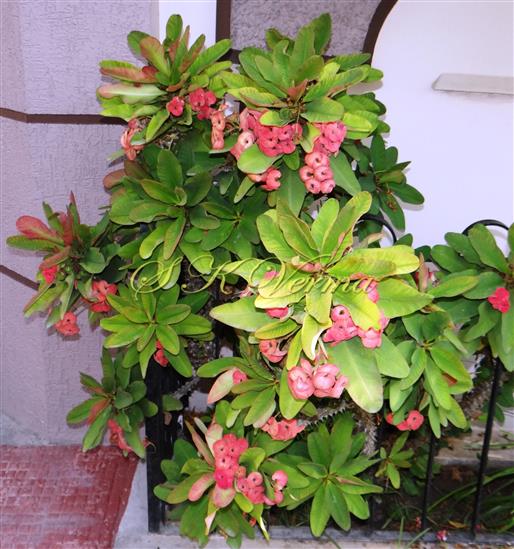
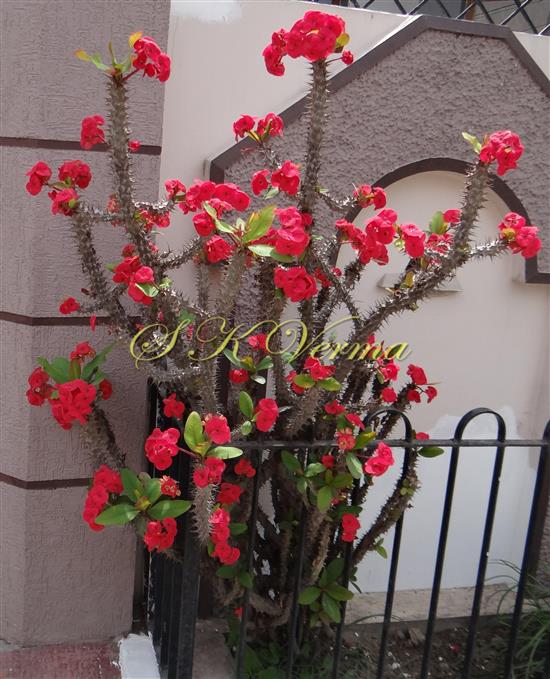
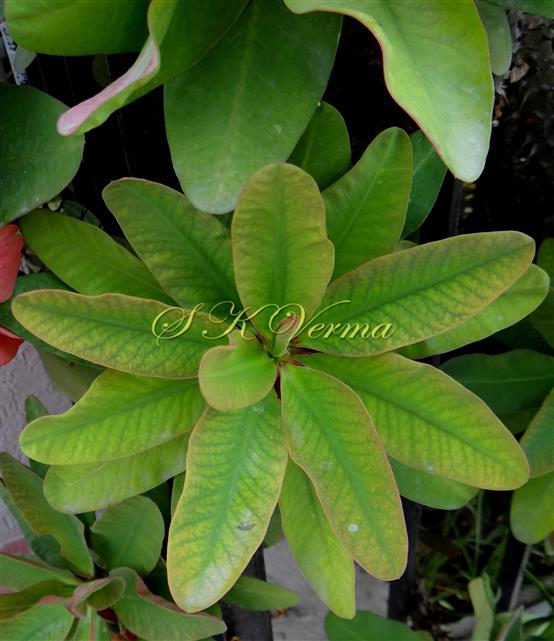

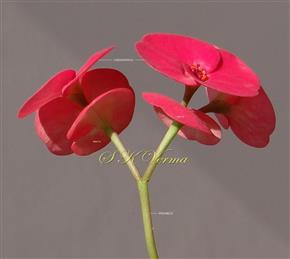
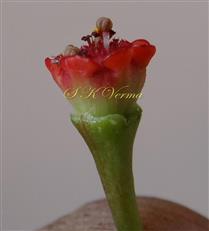
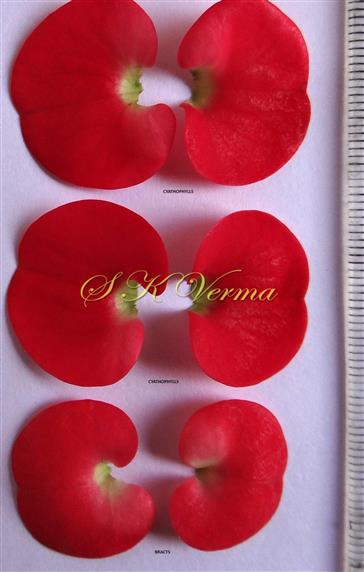
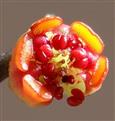
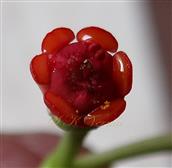
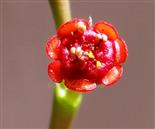
-DSC08865.jpg)

















-DSC08865.jpg)

